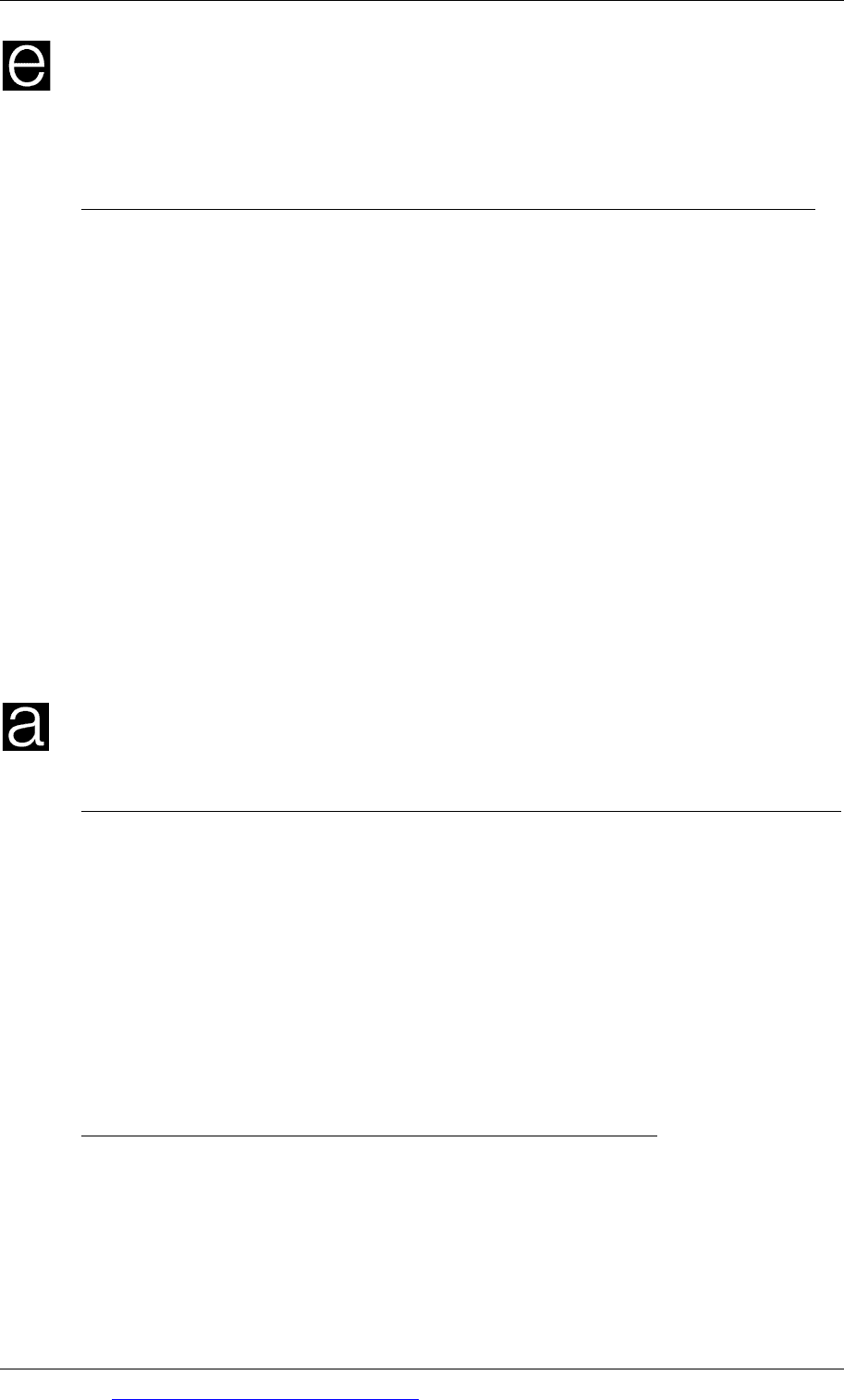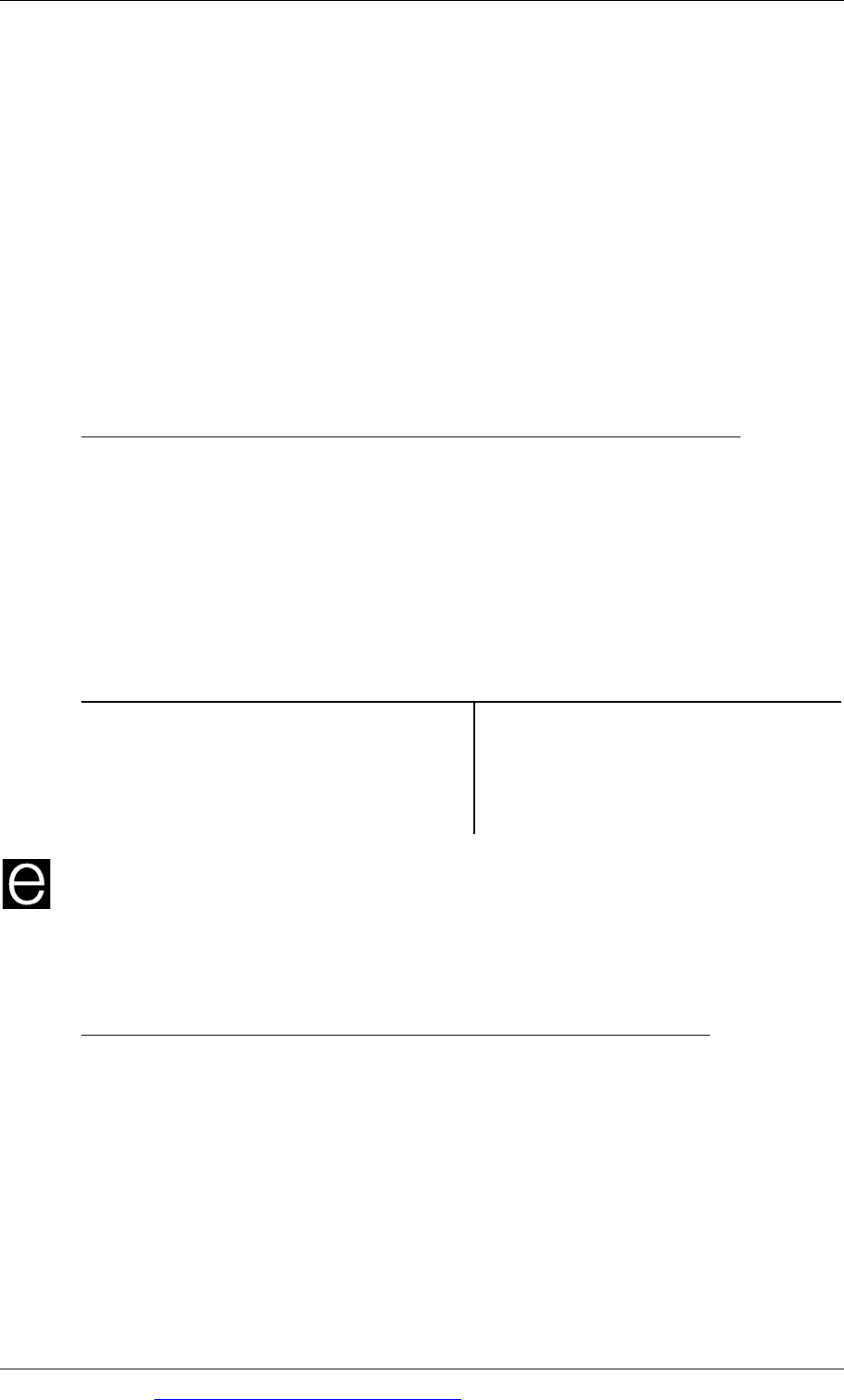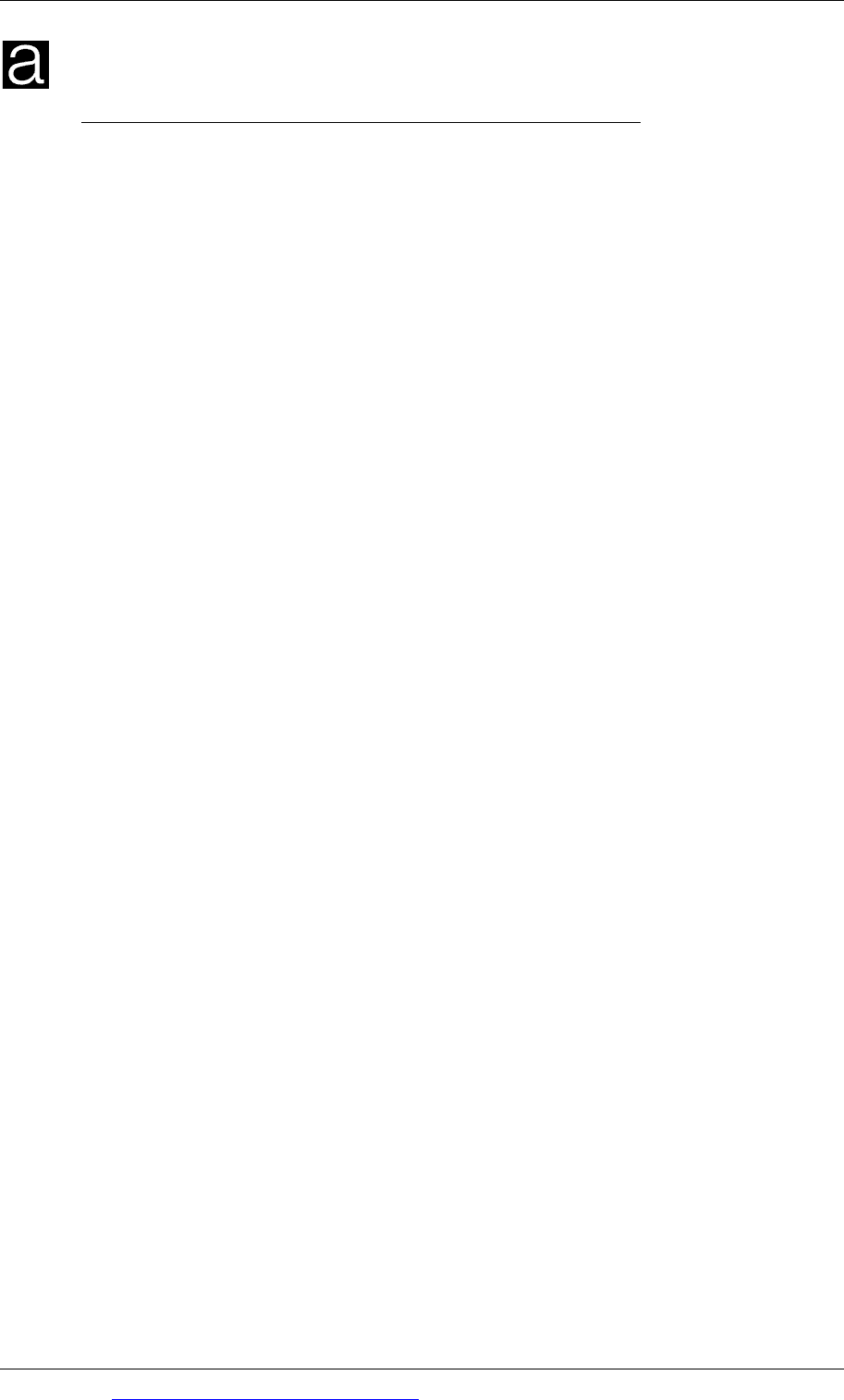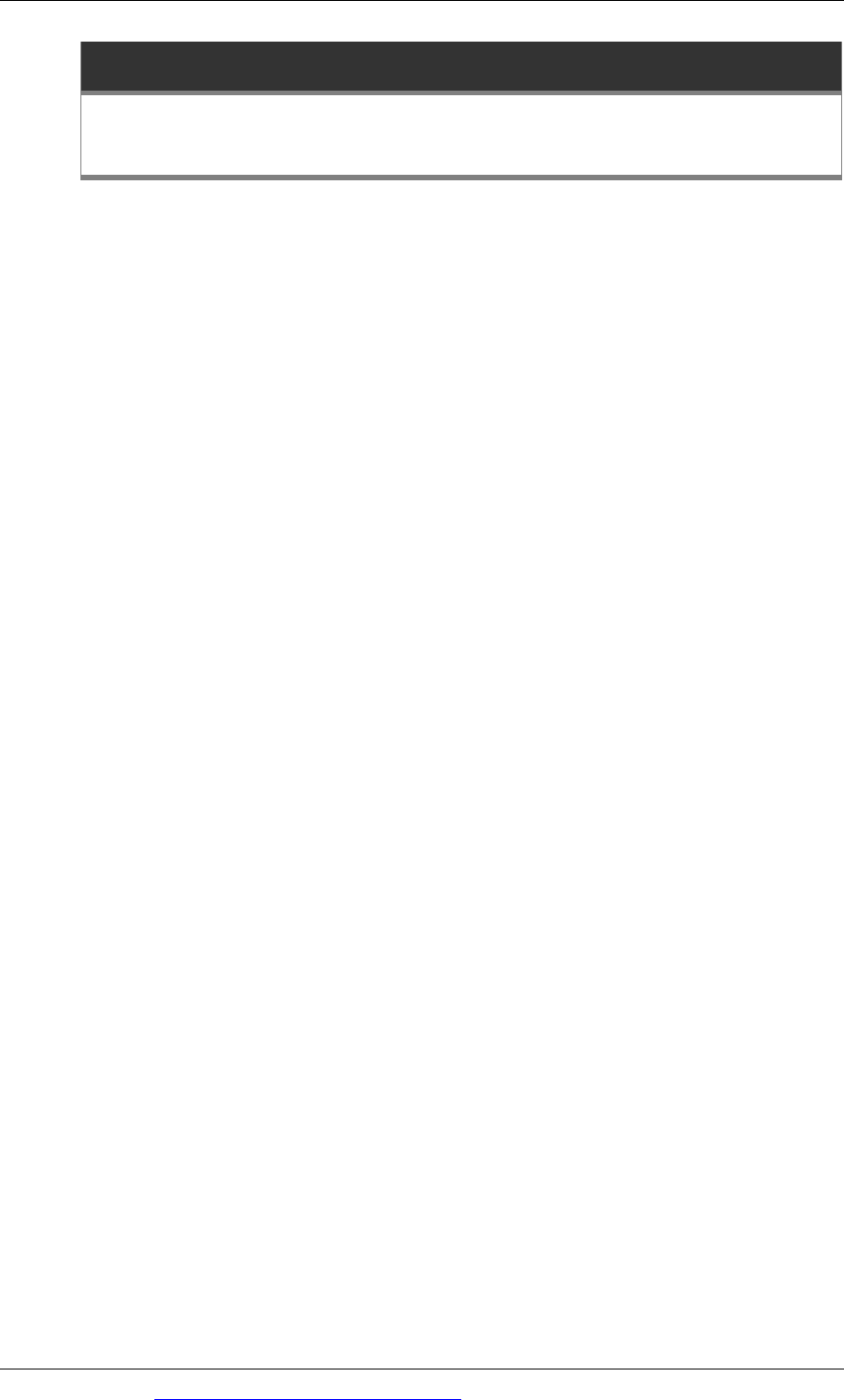ACCA F7 (INT) Financial Reporting - Study text - 2010 - Emile Woolf Publishing
Подождите немного. Документ загружается.


Chapter 17: Statements of cash flows
© EWP Go to www.emilewoolfpublishing.com for Q/As, Notes & Study Guides 345
Similarly, the value of bonds issued or redeemed during the year can be
calculated from differences between the opening and closing amounts in the
statements of financial position.
The amount of cash obtained by issuing new shares might be calculated as the
difference between the opening and closing values in the statements of financial
position for:
− issued share capital, and
− share premium.
Cash from new share issues
The cash raised from new share issues can be established by comparing the equity
share capital and the share premium in the statements of financial position at the
beginning and the end of the year.
$
Share capital + Share premium at the end of the year A
Share capital + Share premium at the beginning of the year B
–––––
= Cash obtained from issuing new shares in the year (A – B)
–––––
Cash from new loans/cash used to repay loans
Cash from new loans or cash paid to redeem loans in the year can be calculated
simply by looking at the difference between the liabilities for loans and bonds at the
beginning and the end of the year.
An increase in loans or bonds means there has been an inflow of cash.
A reduction in loans or bonds means there has been a payment (outflow) of cash.
Remember to add any loans or bonds repayable within one year (current liability) to
the loans or bonds repayable after more than one year (non-current liability) to get
the total figure for loans or bonds.
$
Loans at end of year (current and non-current liabilities) A
Loans at beginning of year (current and non-current liabilities) B
–––––
If A>B, cash inflow from loans in the year (A – B)
If B>A, cash outflow to repay loans in the year
–––––
Note: The same calculation can be applied to bonds or loan stock that the company
might have issued. Bonds and loan stock are long-term debt.

Paper F7: Financial reporting (International)
346 Go to www.emilewoolfpublishing.com for Q/As, Notes & Study Guides © EWP
Example
The statements of financial position of Entity B on 1 January and 31 December Year
4 were as follows:
1JanuaryYear4 31December
Year4
$ $
Sharecapitalandreserves
Ordinarysharesof$1each 100 140
Sharepremium 70 180
Retainedearnings 420 570
–
–
–
–
––––
590 890
–
––– ––––
Non‐currentliabilities
Long‐termloans 230 300
Currentliabilities
Loansnowrepayablewithin12months 20 10
Required
Calculate the financing cash flows for:
(a) cash receipts from share issues, and
(b) cash paid to redeem loans and/or cash receipts from new loans.
Answer
Newshareissues Share
capital
Share
premium
Total
$ $ $
Atendofyear 140,000 180,000 320,000
Atbeginningofyear 100,000 70,000 170,000
–––––––
Cashreceiptsfromshareissue150,000
–––––––
The same approach is used to calculate the net amount of cash received from loans
or the net repayment of loan capital in the period. The net cash flow is calculated as
the difference between total loans at the beginning and at the end of the year. Loans
repayable within 12 months (and so included within current liabilities) must be
included in the calculation.
$
Loansatendofyear (300,000+10,000) 310,000
Loansatbeginningofyear (230,000+20,000) 250,000
–
––––––
Netincreaseinloans 60,000
–
––––––
There has been a net increase of $60,000 in loans outstanding. Since $20,000 was
repayable during the year, this presumably means that $20,000 in loans were repaid

Chapter 17: Statements of cash flows
© EWP Go to www.emilewoolfpublishing.com for Q/As, Notes & Study Guides 347
and new loans of $80,000 were obtained, giving net cash receipts from loans for the
year of $60,000.
7.3 Dividend payments to equity shareholders
In the statement of cash flows, dividend payments to equity shareholders should be
the final dividend payment from the previous year and the interim dividend
payment for the current year. The dividend payments during the year are shown in
the statement of changes in equity (SOCIE). However, in an examination question
you might be expected to calculate dividend payments from figures for retained
earnings (accumulated profits) and the profit after tax for the year.
If there have been no transfers to the retained earnings reserve from the revaluation
reserve in the year, the equity dividend payments can be calculated as follows:
$
Retained earnings reserve at the beginning of the year A
Profit for the year after tax B
–––––
A + B
Retained earnings reserve at the end of the year (C)
–
––––––––
Equity dividend payments (A + B) – C
–
––––––––
Alternative working (set out as a ledger account):
Retainedearningsreserve
$
Dividendspaid(balancingfigure) X
Balancec/d C
_______
X
_______
$
Balanceb/d A
Profitforperiod B
_______
X
_______
Example
The following information has been extracted from the statements of financial
position of a company at the beginning and end of Year 1.
Beginning
ofYear1
Endof
Year1
$ $
Sharecapital(ordinaryshares) 400,000 500,000
Sharepremium 275,000 615,000
Retainedearnings 390,000 570,000
–
–––––––
–
–––––––
1,065,000 1,685,000
–
–––––––
–
–––––––
The profit for the year after taxation was $420,000.
Required
Calculate for year 1, for inclusion in the statement of cash flows, the payment of
dividend to ordinary shareholders.

Paper F7: Financial reporting (International)
348 Go to www.emilewoolfpublishing.com for Q/As, Notes & Study Guides © EWP
Answer
Paymentofdividends
$
Retainedearningsatthebeginningoftheyear 390,000
Profitaftertaxationfortheyear 420,000
–
––––––
810,000
Retainedearningsattheendoftheyear 570,000
–
––––––
Dividendspaidduringtheyear 240,000
–
––––––
7.4 Repayments on finance leases
When non-current assets are acquired under a finance lease, the lessee makes
payments under the lease agreement. For accounting purposes, payments under
finance leases are treated:
partly as interest payments, and
partly as repayment of the lease finance.
For the purposes of the statement of cash flows:
The interest element in the lease payments is treated as an interest payment. It is
included either as a cash flow from operating activities or a cash flow from
financing activities
The repayment of the lease liability is treated as a repayment of a debt, and is
included as a cash flow from financing activities.
If interest payments are treated as a cash flow from financing activities, the full
amount of lease payments is included in this part of the statement of cash flows.

Chapter 17: Statements of cash flows
© EWP Go to www.emilewoolfpublishing.com for Q/As, Notes & Study Guides 349
The uses of cash flow information
The statement of cash flows and the income statement
Interpreting the statement of cash flows
8 The uses of cash flow information
8.1 The statement of cash flows and the income statement
A cash flow statement can provide a different view of the entity’s activities from
that shown by the income statement (or the section of the statement of
comprehensive income that reports the profit or loss for the period). An entity’s
profit for a period differs from its cash flow for a period because:
the income statement and statement of financial position are prepared on an
accruals basis; and
cash flows are not affected by an entity’s accounting policies or accounting
estimates.
There are many reasons why cash flow information is useful.
Cash flows are a matter of fact and are therefore difficult to manipulate.
Cash flow information for the current period can often help users to predict the
amount, timing and likelihood of cash flows in future periods.
Cash flow is easier to understand than profit, particularly for users with little
knowledge of business or accounting.
If the statement of cash flows is prepared using the indirect method, it shows the
relationship between an entity’s profit and its cash generating ability. It
reconciles net profit before tax or operating profit to cash generated from
operations.
The statement of cash flows shows all cash inflows and outflows for a period,
form all activities.
However, cash flow information has some limitations. One of the main ones is that
cash balances are measured at a point in time. Management can:
deliberately arrange receipts and payments of cash, for example by delaying the
payment of suppliers until after the year-end
arrange transactions so that the cash balance is affected as little as possible, for
example, by leasing an asset rather than by purchasing it outright.
Management have a duty to safeguard an entity’s cash and to use it properly. The
practices above are legitimate ways of doing this, but it is also possible to arrange
transactions deliberately so that the entity has a much higher cash balance than
usual at a particular time. For example, an asset may be sold and almost
immediately repurchased.

Paper F7: Financial reporting (International)
350 Go to www.emilewoolfpublishing.com for Q/As, Notes & Study Guides © EWP
There are other limitations:
The statement of cash flows is based on historical information and therefore does
not provide complete information for assessing future cash flows.
Cash flow is not the same as earnings. Although an entity needs cash to survive
in the short term, it must eventually be profitable or cease trading.
Neither the statement of cash flows nor the income statement provides a complete
picture of a company’s performance. The main financial statements (the statement
of financial position, statement of comprehensive income, statement of changes in
equity and statement of cash flows) reflect different aspects of the same transactions
and should be considered together.
8.2 Interpreting the statement of cash flows
As well as preparing a statement of cash flows, you may be asked to comment on
the cash inflows and outflows of the entity and its cash position. The easiest way to
do this is to start at the beginning of the statement and work through it.
Cash generated from operations
Compare this figure to profit before tax/operating profit. How different are the two
figures? Why are they different? Look at the items in the first part of the statement,
particularly the movements in inventories, receivables and payables. If cash
generated from operations is about the same as, or higher than operating profit,
there is probably no cause for concern.
If cash generated from operations is much lower than profit, this may be a worrying
sign. If there are also large increases in inventories, receivables and payables,
possible reasons are that:
The entity is expanding very rapidly and this is absorbing cash generated from
operations.
Working capital management is poor.
Interest paid, taxation paid and dividends paid
Compare these with cash generated from operations. Remember that the entity has
to meet its liabilities for interest and tax, but it does not have to pay an equity
dividend.
Are tax, interest and dividend payments covered by cash generated from
operations? The answer should normally be yes.
Investing activities
The main items here are usually the purchase of new non-current assets (an
outflow) and the sale of non-current assets (an inflow). Has the entity invested a
significant amount of cash during the year? If so, how has the purchase been
financed? From existing cash balances, a share issue, long term borrowing or a
combination of all three?

Chapter 17: Statements of cash flows
© EWP Go to www.emilewoolfpublishing.com for Q/As, Notes & Study Guides 351
Capital investment is usually a good sign; the new assets will generate increased
profits and cash flows in future. However, if the entity has financed the purchase
mainly or wholly from short-term sources, such as an overdraft, this is normally not
a good sign. It means that the entity may become dangerously short of cash to meet
its normal day-to-day needs.
Financing activities
Has the entity raised finance during the year? If so, was this by a share issue, or by
borrowing, or a combination of the two? The reason for raising finance is often clear;
usually it is to finance investment and/or an expansion of the business.
If borrowings have increased, will the entity have enough cash available to meet
additional interest payments in future?
Has the entity repaid borrowings during the year? When do the entity’s existing
borrowings have to be repaid? How easily will the entity be able to make
repayments?
Increase/decrease in cash and cash balances
The overall increase or decrease in cash needs to be considered in the context of the
statement of cash flows as a whole. A decrease is not necessarily a bad sign. For
example, the entity may have had surplus cash in the previous year or may have
repaid a loan.
In the same way, an increase in cash or a huge cash balance is not always a good
sign, if the cash could have been invested elsewhere to generate profit.
Does the entity have a positive cash balance or a bank overdraft? If an overdraft,
how close is it to its overdraft limit?
Does the entity have enough cash to meet both its immediate and its longer-term
needs? Consider:
current liabilities (especially income tax and interest)
the current level of dividends
any plans for expansion of the business
any other spending commitments
any liability to repay borrowings within the next twelve months.

Paper F7: Financial reporting (International)
352 Go to www.emilewoolfpublishing.com for Q/As, Notes & Study Guides © EWP

© EWP Go to www.emilewoolfpublishing.com for Q/As, Notes & Study Guides 353
Paper F7 (INT)
Financial reporting
CHAPTER
18
Consolidated accounts
Contents
1 The nature of a group and consolidated accounts
2 Consolidated statement of financial position: the
basic rules
3 Consolidated statement of financial position:
purchased goodwill
4 Consolidated statement of financial position:
non-controlling interests
5 Consolidated statement of financial position: fair
value adjustments
6 Consolidated statement of comprehensive income

Paper F7: Financial reporting (International)
354 Go to www.emilewoolfpublishing.com for Q/As, Notes & Study Guides © EWP
The nature of a group and consolidated accounts
A group of companies: parent and subsidiaries
Statement of financial position of the parent: accounting for a subsidiary
Purpose and nature of consolidated financial statements
The effect of the parent/subsidiary relationship on the financial statements
International accounting standards and consolidated accounts
The requirement to prepare consolidated accounts
The requirement to include all subsidiaries
Common reporting date
Uniform accounting policies
1 The nature of a group and consolidated accounts
1.1 A group of companies: parent and subsidiaries
A group consists of a parent entity and one or more subsidiary entities. (There may
also be ‘associates’ in a group: these are described in a later chapter).
An entity is a subsidiary of another entity if it is controlled by that other entity.
‘Control’ usually means that more than 50% of its equity shares are owned by
that other entity.
Within a group, Company C might be a subsidiary of Company B, which is a
subsidiary of Company A. Company C is then a sub-subsidiary of Company A.
Group structures with sub-subsidiaries are not examinable.
The entity that ultimately controls all the entities in the group is called the
parent.
A parent is defined as ‘an entity that has one or more subsidiaries’ (IAS27).
Definition of ‘control’
Control is assumed to exist when the parent owns directly, or indirectly through
other subsidiaries, more than half of the voting power of the entity, unless in
exceptional circumstances it can be clearly demonstrated that such control does not
exist.
Control also exists when the entity (= parent) owns half or less than half of the
voting power of the entity but any of the following circumstances also applies:
The entity has power over more than half of the voting rights in the subsidiary
by virtue of an agreement with other investors.
The entity has power to govern the financial and operating policies of the
subsidiary entity under a statute or agreement.
